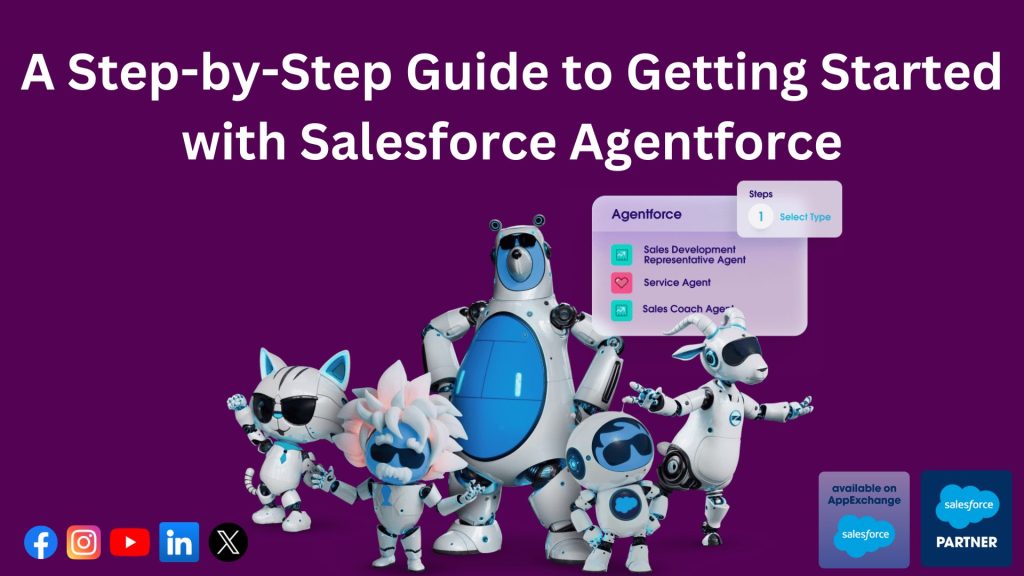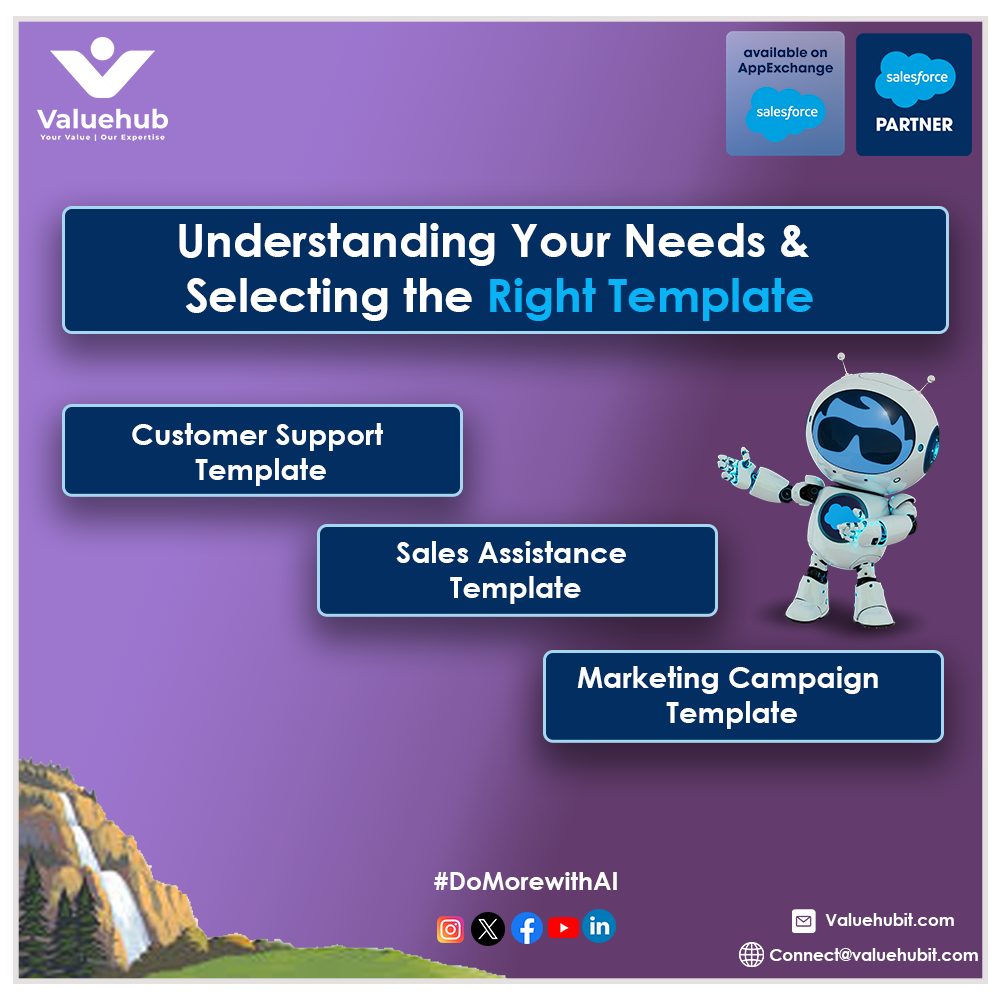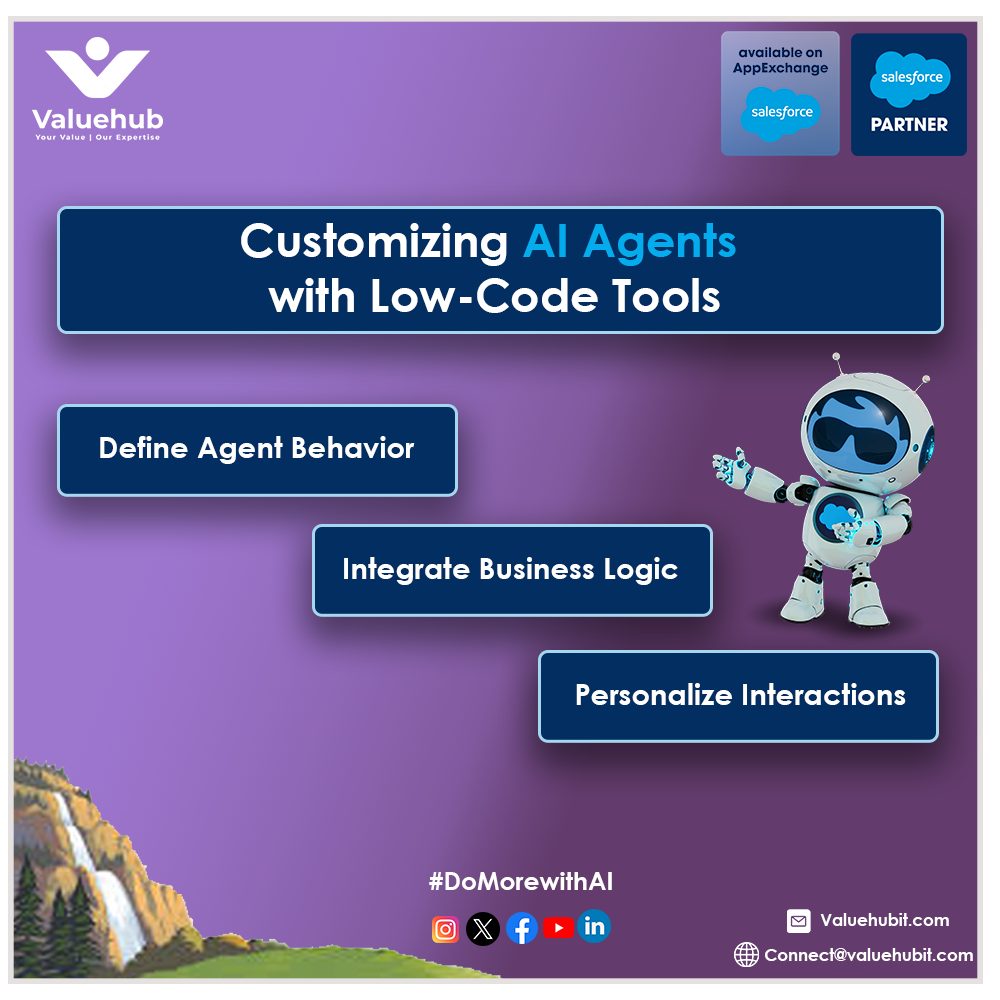
Agentforce By Salesforce – one of the significant innovations by the world’s #1 CRM will disrupt the marketplace. Businesses will go to integrate it into their business. Many companies have already deployed it like, Saks Fifth, Open Table, Wiley’s, and the list is going on.
If you want to start your journey with Agentforce, we are here to help you out. Valuehub is one of an emerging Salesforce Summit Partner, working recklessly to bring digital transformation.
The agentic AI is expanding roots in every operation. The AI-powered tools bring efficiency into business operations. But how can we get started with Salesforce Agentforce? Well, in this guide, let’s explore everything in depth and detail.
How to get started with Salesforce Agentforce?
Well, in the earlier blog, we have already discussed the used case and its implementation. From planning to optimization – everything will be managed by the experts of Valuehub.
Now, let’s move and understand the step by step guide.
Step 1: Understanding Your Needs and Selecting the Right Templates
Before diving into the technical setup, it’s crucial to have a clear understanding of your business needs and objectives. Consider the following questions:
- What specific customer service challenges are you facing?
- How can AI agents enhance your customer interactions?
- What outcomes are you aiming to achieve with Agentforce?
Once you’ve outlined your goals, the next step is to select the appropriate templates within Agentforce. Salesforce offers a variety of templates tailored to different business needs, ranging from customer support to sales and marketing. These templates serve as a foundation, providing pre-configured settings that can be customized to meet your specific requirements.

Selecting the Right Template:
- Customer Support Templates: Ideal for businesses looking to enhance their customer service operations.
- Sales Assistance Templates: Perfect for organizations aiming to streamline their sales processes and improve lead qualification.
- Marketing Campaign Templates: Designed for companies focused on optimizing their marketing efforts and customer engagement strategies.
By selecting the right template, you can ensure that your AI agents are equipped with the necessary tools to address your specific needs, setting the stage for a successful implementation.
Step 2: Customizing AI Agents with Low-Code Tools
One of the standout features of Agentforce by Salesforce is its low-code platform, which allows businesses to customize their AI agents with minimal coding. This flexibility ensures that your AI agents can be tailored to fit your unique business processes and customer interactions.

Customizing Your AI Agents:
- Define Agent Behavior: Use the low-code interface to define how your AI agents should respond to different customer inquiries. This includes setting up conversation flows, response triggers, and automated actions.
- Integrate Business Logic: Customize your agents to align with your business rules and logic. This could involve integrating with your CRM system to pull in customer data or connecting with other business applications.
- Personalize Interactions: Tailor your agents to provide personalized customer experiences. This can be achieved by leveraging customer data to offer relevant recommendations, support, and responses.
Salesforce’s low-code tools make it easy to create powerful, customized AI agents that enhance customer interactions without requiring extensive programming knowledge. This not only speeds up the implementation process but also ensures that your agents are aligned with your business objectives.
Step 3: Integration with Your Existing Systems
Integration is a critical component of any successful digital transformation initiative. Agentforce by Salesforce is designed to seamlessly integrate with your existing systems, ensuring that your AI agents have access to the data and tools they need to operate effectively.
Steps to Integrate Agentforce:
- Assess Your Systems: Identify the systems and applications that need to be integrated with Agentforce. This could include your CRM, ERP, marketing automation tools, and customer support platforms.
- Use Salesforce Connectors: Salesforce provides a range of connectors and APIs that facilitate seamless integration with various systems. Utilize these connectors to link Agentforce with your existing infrastructure.
- Data Synchronization: Ensure that data flows smoothly between Agentforce and your other systems. This involves setting up data synchronization processes to keep your customer information up-to-date across all platforms.
- Test Integrations: Before going live, thoroughly test your integrations to ensure that all systems are working together as expected. This step is crucial to identify and resolve any issues that may arise.
By integrating Agentforce with your existing systems, you can create a cohesive ecosystem that enhances the capabilities of your AI agents and ensures a seamless customer experience.
End Note
Congratulations! You have now completed a step-by-step guide to getting started with Agentforce by Salesforce. From understanding your needs and selecting the right templates to customizing AI agents with low-code tools and integrating them with your existing systems, you are well on your way to transforming your customer interactions.
Stay with us as we are going to explore many more about Agentforce. Let’s Do More With AI.
